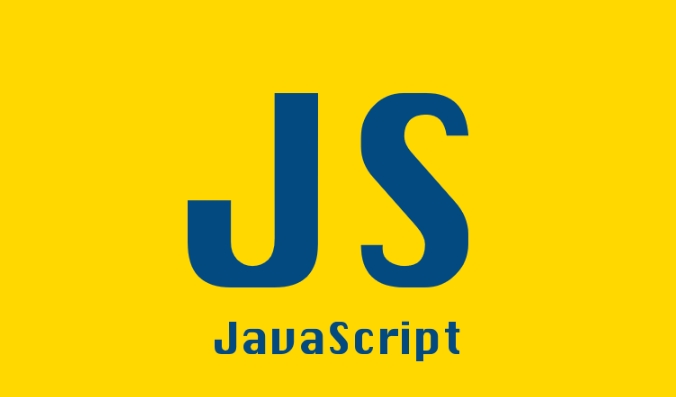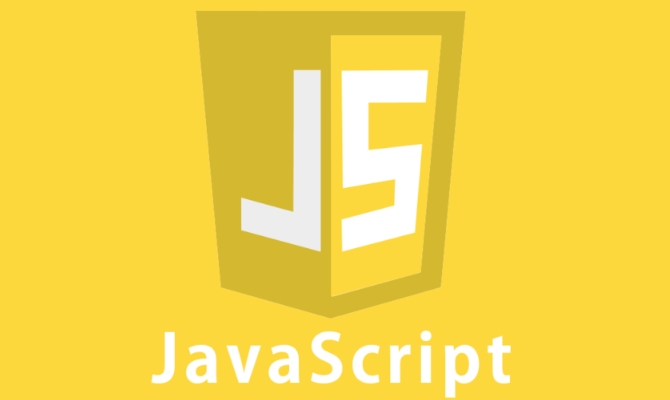State Management in React: Redux Toolkit vs. Zustand
Jul 28, 2025 am 04:09 AMRedux Toolkit is better for large-scale applications requiring structured state management, advanced debugging, and built-in data fetching via RTK Query. 2. Zustand is better for small to medium apps where simplicity, minimal boilerplate, and fast setup are prioritized. 3. Choose Redux Toolkit for enterprise-level apps with complex state and team scalability needs. 4. Choose Zustand for lightweight, flexible state management that aligns closely with React’s native patterns and reduces overhead. The choice depends on project size, team familiarity, and desired tooling support.

When it comes to state management in React, developers often face the choice between established tools like Redux Toolkit and newer, lightweight alternatives like Zustand. Both are widely used, but they serve different needs and project scales. Let’s break down the key differences, strengths, and trade-offs to help you decide which might be better for your use case.

1. Redux Toolkit: The Structured, Scalable Choice
Redux Toolkit (RTK) is the official, opinionated way to use Redux. It simplifies the Redux setup process and reduces boilerplate, making it much more approachable than classic Redux.
Key Features:
-
Slices: Organize state logic into reusable "slices" (e.g.,
userSlice,cartSlice). - Immer Integration: Allows writing "mutating" logic in reducers while maintaining immutability under the hood.
- RTK Query: Built-in data fetching and caching, reducing the need for extra libraries like Axios or React Query in many cases.
-
DevTools & Middleware: Full support for time-travel debugging, logging, and async handling via
createAsyncThunk.
Best For:
- Large-scale applications with complex state logic.
- Teams that value predictability, strict patterns, and debugging capabilities.
- Apps already using Redux or needing strong typing (great TypeScript support).
Example:
// store/userSlice.ts
import { createSlice } from '@reduxjs/toolkit';
const userSlice = createSlice({
name: 'user',
initialState: { name: '', age: 0 },
reducers: {
setUser: (state, action) => {
state.name = action.payload.name;
state.age = action.payload.age;
},
},
});
export const { setUser } = userSlice.actions;
export default userSlice.reducer;Redux Toolkit is powerful but comes with a learning curve and more setup than simpler tools.
2. Zustand: Simplicity and Flexibility First
Zustand (German for "state") is a minimalistic state management library that prioritizes simplicity and direct access.
Key Features:
- No Provider Wrapping: Unlike Redux, you don’t need to wrap your app in a
<Provider>. - Hooks-Based API: State is defined and consumed using a single hook.
- Minimal Boilerplate: No actions, reducers, or immutability concerns.
- Flexible Structure: You can colocate state, actions, and async logic in one place.
Best For:
- Small to medium apps where fast setup matters.
- Developers who want less boilerplate and more direct control.
- Projects avoiding the Redux paradigm altogether.
Example:
// store/useUserStore.ts
import { create } from 'zustand';
type UserStore = {
name: string;
age: number;
setUser: (name: string, age: number) => void;
};
export const useUserStore = create<UserStore>((set) => ({
name: '',
age: 0,
setUser: (name, age) => set({ name, age }),
}));Usage in component:

const { name, setUser } = useUserStore();Zustand feels more like React’s own patterns—simple, composable, and unobtrusive.
3. Key Differences at a Glance
| Feature | Redux Toolkit | Zustand |
|---|---|---|
| Boilerplate | Moderate (slices, actions, etc.) | Minimal |
| Learning Curve | Steeper | Gentle |
| DevTools | Excellent (Redux DevTools) | Limited (basic middleware) |
| Data Fetching | RTK Query built-in | Needs external tools (e.g., fetch) |
| Scalability | High (great for large teams/apps) | Medium (can get messy if unorganized) |
| TypeScript Support | Excellent | Good |
| Bundle Size | Larger (~10–15 KB) | Smaller (~2–3 KB) |
| Provider Needed? | Yes | No |
4. When to Use Which?
Choose Redux Toolkit if:
- You’re building a large, enterprise-level app.
- You need advanced debugging, logging, or time-travel.
- Your team is already familiar with Redux.
- You want built-in caching and data synchronization (RTK Query).
Choose Zustand if:
- You want to get up and running quickly.
- Your app has moderate state needs.
- You prefer a simpler, more React-like API.
- You’re tired of Redux boilerplate and provider hell.
Final Thoughts
Redux Toolkit is still the go-to for complex, scalable applications where predictability and tooling matter. Zustand shines in simplicity and developer experience—perfect for smaller apps or when you just want to manage state without ceremony.
In many modern React apps, especially those using React Server Components or Next.js, Zustand is becoming increasingly popular due to its zero-setup nature and clean syntax.
Bottom line: For big, complex apps—go with Redux Toolkit. For speed, simplicity, and less overhead—Zustand is often the better pick.
Basically, it’s not about which is "better"—it’s about which fits your project and team better.
The above is the detailed content of State Management in React: Redux Toolkit vs. Zustand. For more information, please follow other related articles on the PHP Chinese website!

Hot AI Tools

Undress AI Tool
Undress images for free

Undresser.AI Undress
AI-powered app for creating realistic nude photos

AI Clothes Remover
Online AI tool for removing clothes from photos.

Clothoff.io
AI clothes remover

Video Face Swap
Swap faces in any video effortlessly with our completely free AI face swap tool!

Hot Article

Hot Tools

Notepad++7.3.1
Easy-to-use and free code editor

SublimeText3 Chinese version
Chinese version, very easy to use

Zend Studio 13.0.1
Powerful PHP integrated development environment

Dreamweaver CS6
Visual web development tools

SublimeText3 Mac version
God-level code editing software (SublimeText3)

Hot Topics
 React vs. Vue: Which Framework Does Netflix Use?
Apr 14, 2025 am 12:19 AM
React vs. Vue: Which Framework Does Netflix Use?
Apr 14, 2025 am 12:19 AM
Netflixusesacustomframeworkcalled"Gibbon"builtonReact,notReactorVuedirectly.1)TeamExperience:Choosebasedonfamiliarity.2)ProjectComplexity:Vueforsimplerprojects,Reactforcomplexones.3)CustomizationNeeds:Reactoffersmoreflexibility.4)Ecosystema
 React's Ecosystem: Libraries, Tools, and Best Practices
Apr 18, 2025 am 12:23 AM
React's Ecosystem: Libraries, Tools, and Best Practices
Apr 18, 2025 am 12:23 AM
The React ecosystem includes state management libraries (such as Redux), routing libraries (such as ReactRouter), UI component libraries (such as Material-UI), testing tools (such as Jest), and building tools (such as Webpack). These tools work together to help developers develop and maintain applications efficiently, improve code quality and development efficiency.
 Netflix's Frontend: Examples and Applications of React (or Vue)
Apr 16, 2025 am 12:08 AM
Netflix's Frontend: Examples and Applications of React (or Vue)
Apr 16, 2025 am 12:08 AM
Netflix uses React as its front-end framework. 1) React's componentized development model and strong ecosystem are the main reasons why Netflix chose it. 2) Through componentization, Netflix splits complex interfaces into manageable chunks such as video players, recommendation lists and user comments. 3) React's virtual DOM and component life cycle optimizes rendering efficiency and user interaction management.
 React: The Power of a JavaScript Library for Web Development
Apr 18, 2025 am 12:25 AM
React: The Power of a JavaScript Library for Web Development
Apr 18, 2025 am 12:25 AM
React is a JavaScript library developed by Meta for building user interfaces, with its core being component development and virtual DOM technology. 1. Component and state management: React manages state through components (functions or classes) and Hooks (such as useState), improving code reusability and maintenance. 2. Virtual DOM and performance optimization: Through virtual DOM, React efficiently updates the real DOM to improve performance. 3. Life cycle and Hooks: Hooks (such as useEffect) allow function components to manage life cycles and perform side-effect operations. 4. Usage example: From basic HelloWorld components to advanced global state management (useContext and
 The Future of React: Trends and Innovations in Web Development
Apr 19, 2025 am 12:22 AM
The Future of React: Trends and Innovations in Web Development
Apr 19, 2025 am 12:22 AM
React's future will focus on the ultimate in component development, performance optimization and deep integration with other technology stacks. 1) React will further simplify the creation and management of components and promote the ultimate in component development. 2) Performance optimization will become the focus, especially in large applications. 3) React will be deeply integrated with technologies such as GraphQL and TypeScript to improve the development experience.
 Frontend Development with React: Advantages and Techniques
Apr 17, 2025 am 12:25 AM
Frontend Development with React: Advantages and Techniques
Apr 17, 2025 am 12:25 AM
The advantages of React are its flexibility and efficiency, which are reflected in: 1) Component-based design improves code reusability; 2) Virtual DOM technology optimizes performance, especially when handling large amounts of data updates; 3) The rich ecosystem provides a large number of third-party libraries and tools. By understanding how React works and uses examples, you can master its core concepts and best practices to build an efficient, maintainable user interface.
 React, Vue, and the Future of Netflix's Frontend
Apr 12, 2025 am 12:12 AM
React, Vue, and the Future of Netflix's Frontend
Apr 12, 2025 am 12:12 AM
Netflix mainly uses React as the front-end framework, supplemented by Vue for specific functions. 1) React's componentization and virtual DOM improve the performance and development efficiency of Netflix applications. 2) Vue is used in Netflix's internal tools and small projects, and its flexibility and ease of use are key.
 React vs. Backend Frameworks: A Comparison
Apr 13, 2025 am 12:06 AM
React vs. Backend Frameworks: A Comparison
Apr 13, 2025 am 12:06 AM
React is a front-end framework for building user interfaces; a back-end framework is used to build server-side applications. React provides componentized and efficient UI updates, and the backend framework provides a complete backend service solution. When choosing a technology stack, project requirements, team skills, and scalability should be considered.







